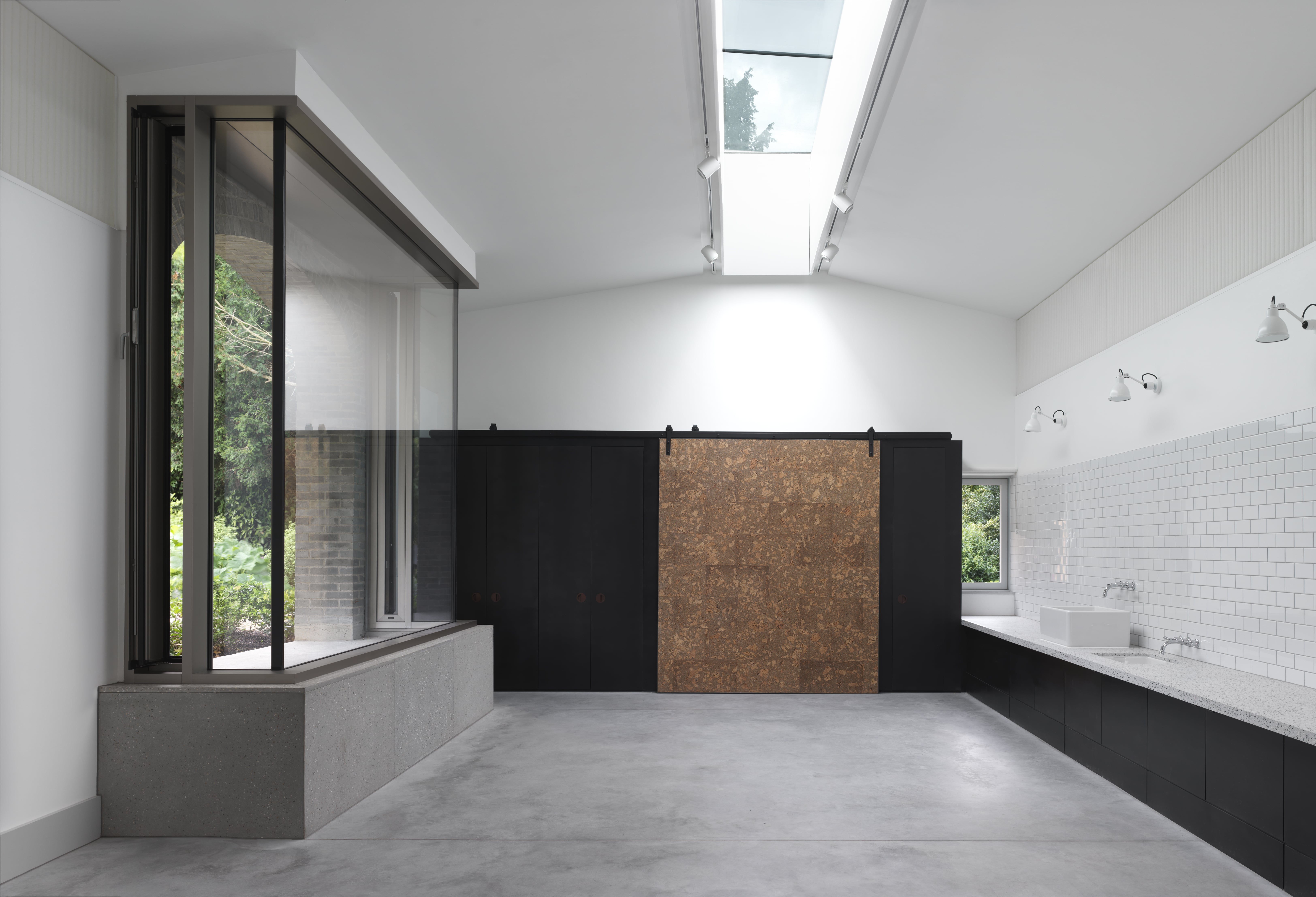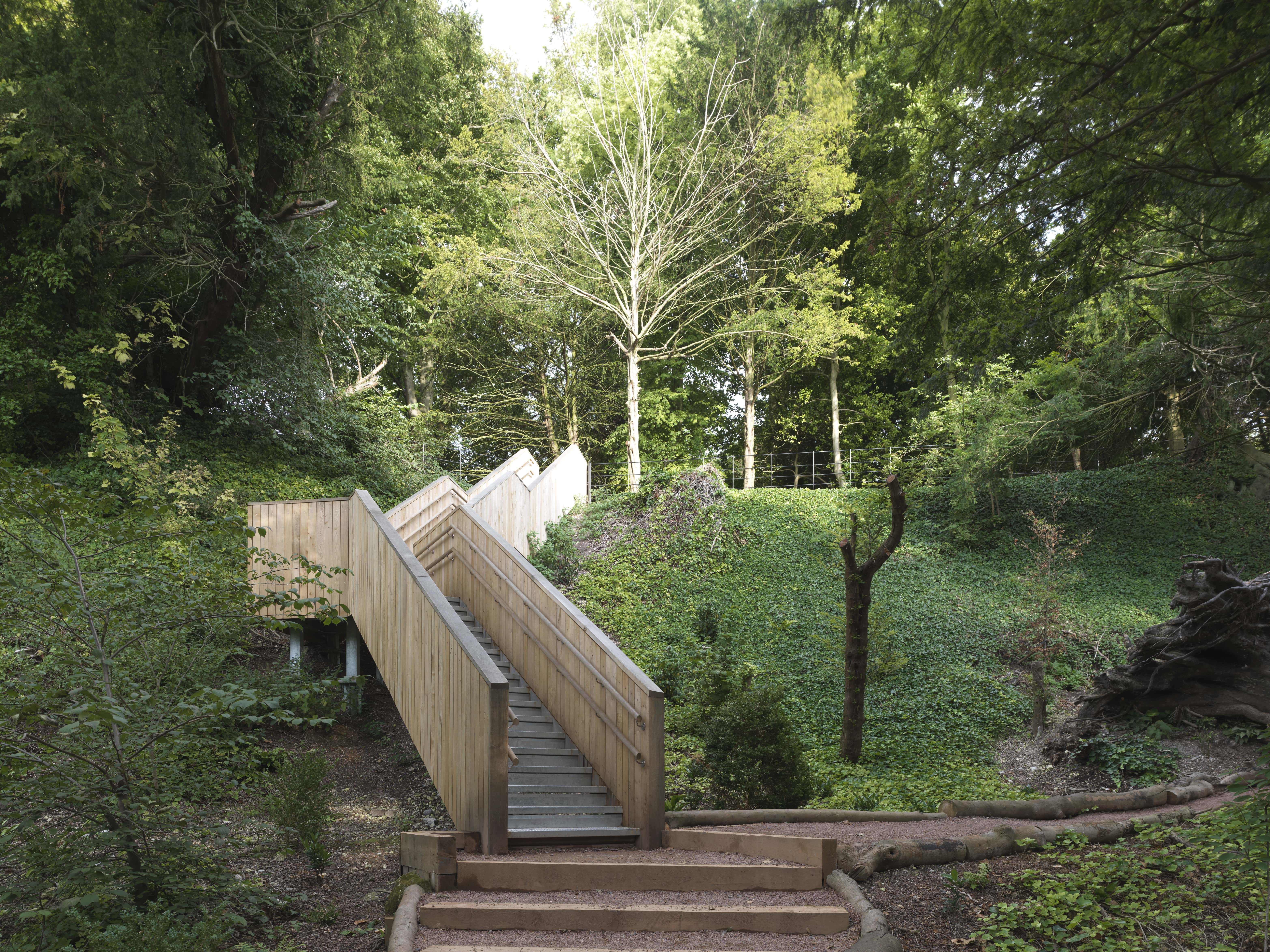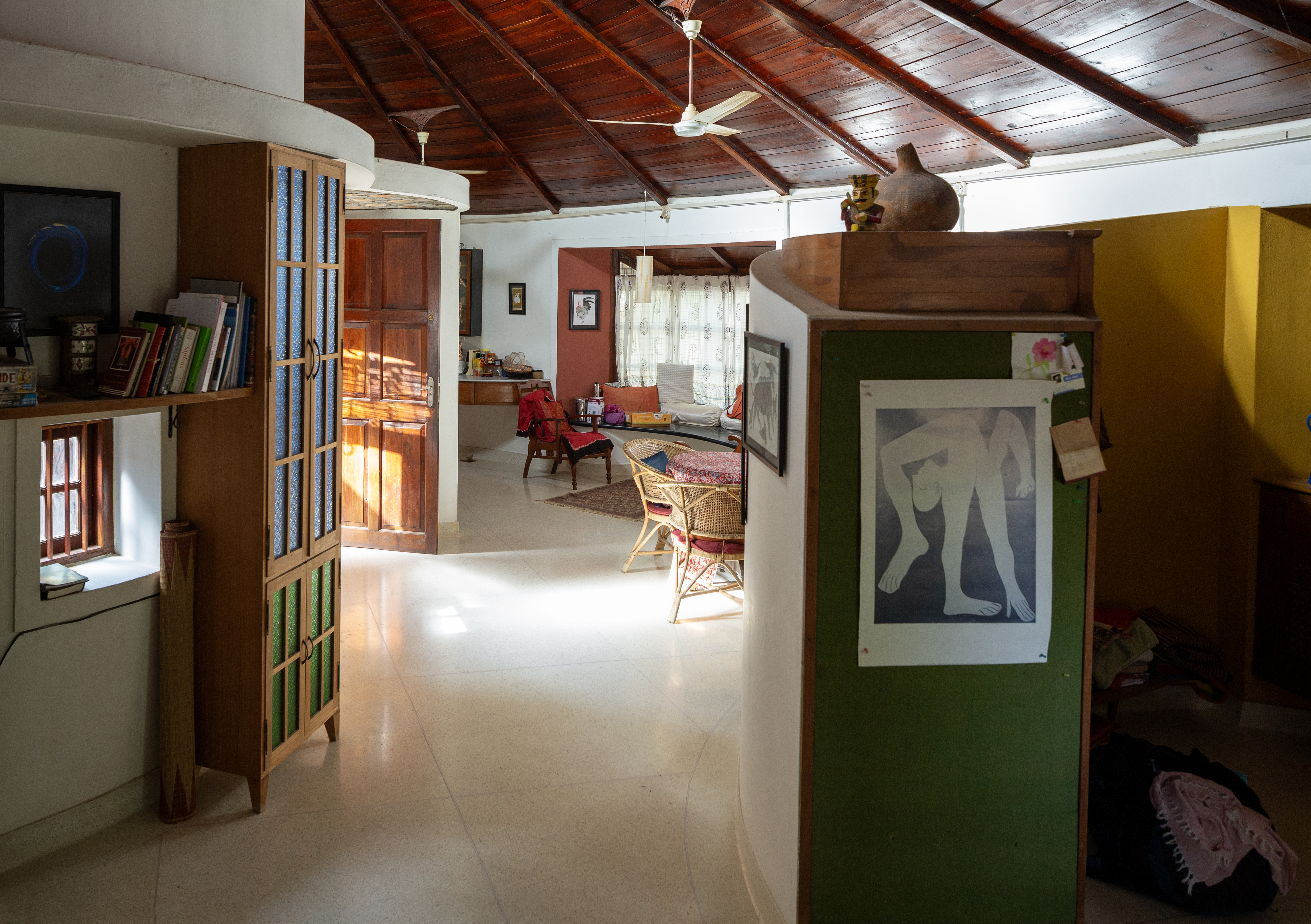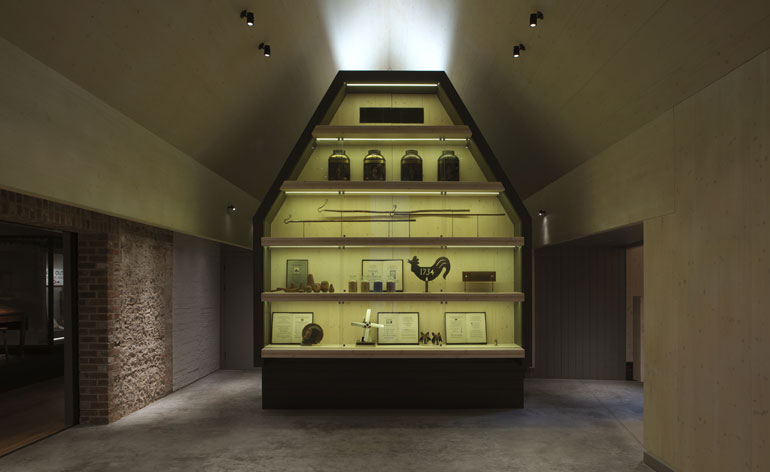Adam Richards designs a new education facility for a 16th century castle by the sea
While working from home in London, we've been plotting places to visit in the UK when the lockdown lifts. Adam Richards' new education facility for Walmer Castle in Kent is a new reason to visit this historical treasure, once the residence of the HM Queen Elizabeth the Queen Mother and set within eight acres of gardens

Brotherton Lock - Photography
In the grounds of Walmer Castle on the UK's Kent coastline, Adam Richards Architects has designed a new learning centre and café that echoes the brooding qualities of the 16th century castle with its sculptural handmade brick walls. Commissioned by English Heritage, which owns the historic site and gardens, it is the first new substantial building built on the site for 145 years.
Walmer Castle was originally built as an artillery fort in 1539-40 during the reign of Henry VIII, and from the 18th century, the Tudor-fortress turned into a stately home for historical figures such as Duke of Wellington, Sir Winston Churchill, and HM Queen Elizabeth the Queen Mother. The popular destination welcomes 3,000 education visitors annually, and needed a dedicated space to host these visiting groups and school pupils where events such as cross-curricular learning days and nature therapy sessions could play out rain or shine.

Architect Adam Richards, who scooped a Wallpaper* Design Award this year for his Nithurst Farm house in the South Downs National Park, responded to the brief with a single storey brick building. Inside, a single main room dedicated to group education features a five-pointed Tudor arc-shaped window that frames a cloud-shaped double row of hedges bordering the kitchen garden. Comfortable in its garden setting, the exterior is discreet and contemporary. Grey brick walls are framed by a shallow pitched zinc roof and a rough concrete plinth, sandblasted to expose the aggregate.
Sensitive to its site and existing architectural additions from the 18th century, the café makes the most of an original timber-framed glasshouse and opens up onto a Yorkstone terrace for coffees and lunches in good weather. Support spaces are housed in a black zinc building with cantilevered roof canopies.
RELATED STORY
Adam Richards, director, Adam Richards Architects, said: ‘This new learning space "bookends" the estate buildings at the castle, entering into a dialogue with the castle across space and across time. The garden is now re-presented to users of the new building through its vitrine window: visitors see it through this vast display case, framed by a new five-pointed brick arched opening.’
Connecting the garden even further to the site, a new outside staircase of galvanised steel clad in air-dried oak leads visitors into a lost quarry garden, the Glen, newly accessible to the public for the first time in 100 years. Here, head gardener Mark Brent has planted species that with thrive in the calcareous soil of the former chalk quarry, and craftsman William Hardie has designed a new children’s play trail.




INFORMATION
Receive our daily digest of inspiration, escapism and design stories from around the world direct to your inbox.
ADDRESS
Walmer Castle and Gardens
Kingsdown road
Walmer
Deal
CT14 7LJ
UK
Harriet Thorpe is a writer, journalist and editor covering architecture, design and culture, with particular interest in sustainability, 20th-century architecture and community. After studying History of Art at the School of Oriental and African Studies (SOAS) and Journalism at City University in London, she developed her interest in architecture working at Wallpaper* magazine and today contributes to Wallpaper*, The World of Interiors and Icon magazine, amongst other titles. She is author of The Sustainable City (2022, Hoxton Mini Press), a book about sustainable architecture in London, and the Modern Cambridge Map (2023, Blue Crow Media), a map of 20th-century architecture in Cambridge, the city where she grew up.
-
 Inside a creative couple's magical, circular Indian home, 'like a fruit'
Inside a creative couple's magical, circular Indian home, 'like a fruit'We paid a visit to architect Sandeep Virmani and social activist Sushma Iyengar at their circular home in Bhuj, India; architect, writer and photographer Nipun Prabhakar tells the story
-
 Ten of the best track jackets for channelling a 1970s-meets-1990s cool
Ten of the best track jackets for channelling a 1970s-meets-1990s coolAs a ‘Marty Supreme’ track jacket makes a bid for viral garment of 2025 – thanks to one Timothée Chalamet – the Wallpaper* style team selects ten of the best tracksuit and coach jackets for men and women, each encapsulating an easy, nostalgia-tinged elegance
-
 Eight questions for Bianca Censori, as she unveils her debut performance
Eight questions for Bianca Censori, as she unveils her debut performanceBianca Censori has presented her first exhibition and performance, BIO POP, in Seoul, South Korea
-
 A former agricultural building is transformed into a minimal rural home by Bindloss Dawes
A former agricultural building is transformed into a minimal rural home by Bindloss DawesZero-carbon design meets adaptive re-use in the Tractor Shed, a stripped-back house in a country village by Somerset architects Bindloss Dawes
-
 RIBA House of the Year 2025 is a ‘rare mixture of sensitivity and boldness’
RIBA House of the Year 2025 is a ‘rare mixture of sensitivity and boldness’Topping the list of seven shortlisted homes, Izat Arundell’s Hebridean self-build – named Caochan na Creige – is announced as the RIBA House of the Year 2025
-
 In addition to brutalist buildings, Alison Smithson designed some of the most creative Christmas cards we've seen
In addition to brutalist buildings, Alison Smithson designed some of the most creative Christmas cards we've seenThe architect’s collection of season’s greetings is on show at the Roca London Gallery, just in time for the holidays
-
 In South Wales, a remote coastal farmhouse flaunts its modern revamp, primed for hosting
In South Wales, a remote coastal farmhouse flaunts its modern revamp, primed for hostingA farmhouse perched on the Gower Peninsula, Delfyd Farm reveals its ground-floor refresh by architecture studio Rural Office, which created a cosy home with breathtaking views
-
 A revived public space in Aberdeen is named Scotland’s building of the year
A revived public space in Aberdeen is named Scotland’s building of the yearAberdeen's Union Terrace Gardens by Stallan-Brand Architecture + Design and LDA Design wins the 2025 Andrew Doolan Best Building in Scotland Award
-
 A refreshed 1950s apartment in East London allows for moments of discovery
A refreshed 1950s apartment in East London allows for moments of discoveryWith this 1950s apartment redesign, London-based architects Studio Naama wanted to create a residence which reflects the fun and individual nature of the clients
-
 In this Cotswolds home, drama meets minimalism
In this Cotswolds home, drama meets minimalismCotswolds home Hiaven house, with interiors designed by McLaren Excell, is a perfect blend of contemporary chic and calm, countryside drama
-
 David Kohn’s first book, ‘Stages’, is unpredictable, experimental and informative
David Kohn’s first book, ‘Stages’, is unpredictable, experimental and informativeThe first book on David Kohn Architects focuses on the work of the award-winning London-based practice; ‘Stages’ is an innovative monograph in 12 parts
